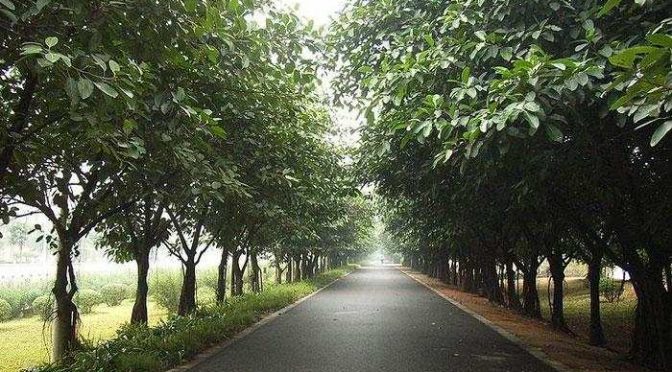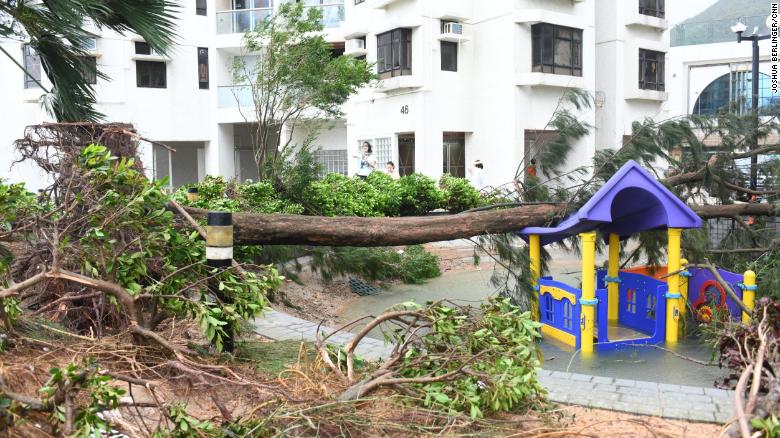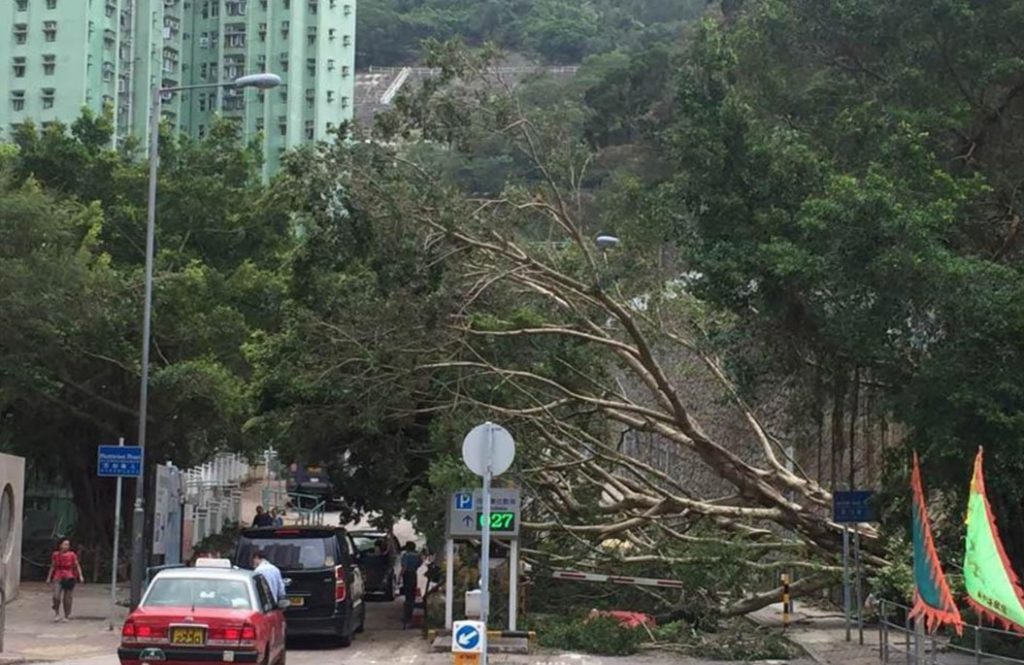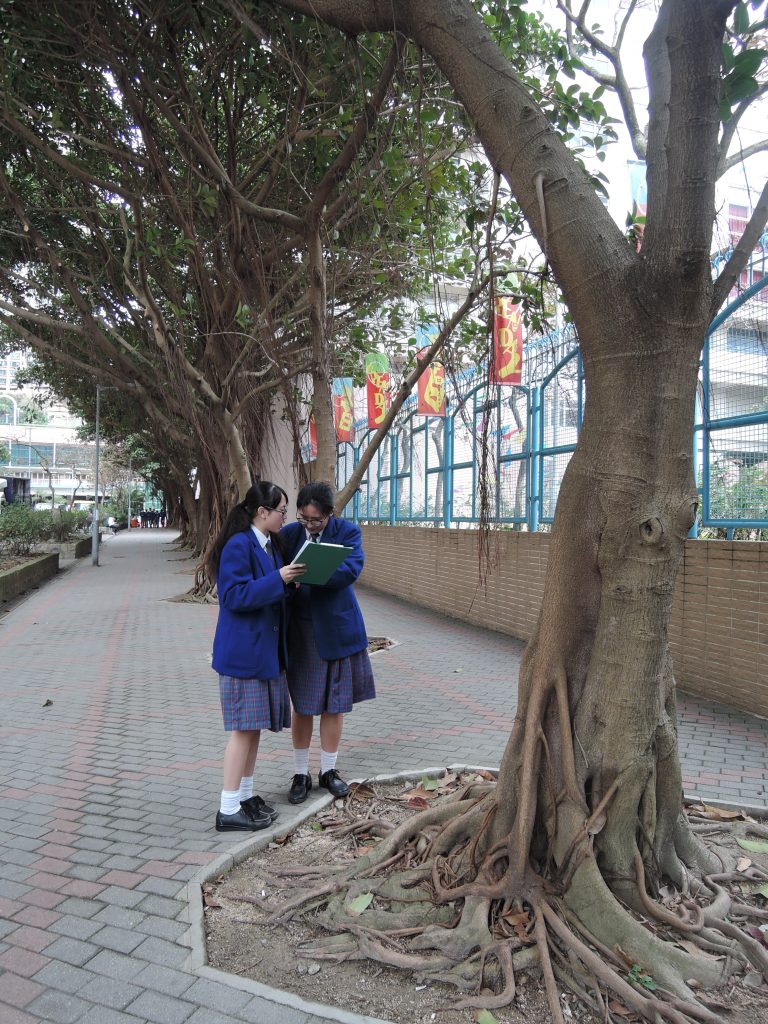Suitable roadside trees in healthy condition and properly cared for can make our city cleaner, greener and have a direct impact on our community through various benefits they provide. Apart from the aesthetic and recreational benefits that roadside trees bring by beautifying the city and providing green spaces, public health is also enhanced as roadside trees can remove dust and absorb harmful gases, improving the air quality and making the city more livable. Roadside trees can prevent soil erosion, lower ambient temperature through cooling effect by their shading and evaporation, as well as influencing urban climate by temperature and humidity control. Moreover, roadside trees provide a habitat for flora and fauna in an urban area.
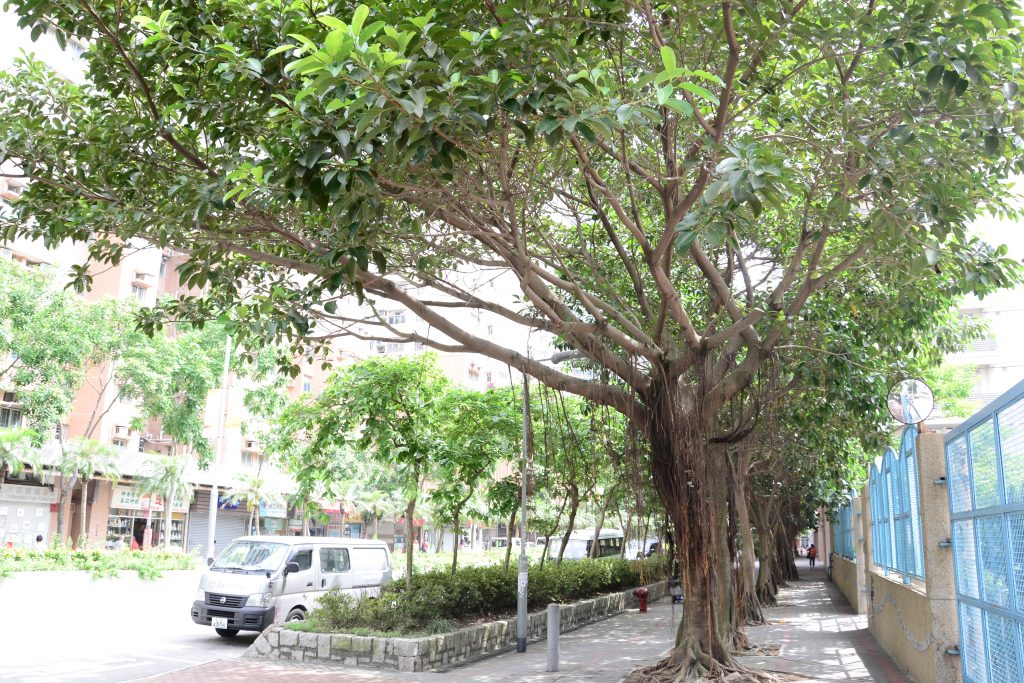
Fallen trees after typhoon
A few years ago, a powerful typhoon had swept through Hong Kong and battered the city’s buildings, leaving a trail of destruction. Many roadside trees were ripped from their roots and felled during the storm. One of the reason is the poor choice of roadside trees. Some large trees that require lots of space and soil to grow deep roots were confined within a small amount of soil in pavements which are most likely to fall when the wind is strong. Another reason is that a good growing environment is not provided to the trees. Most of the soil in an urban environment is alkaline and of poor quality which affects the growth of trees and making them hard to anchor themselves. Moreover, as roads are usually covered by concrete, asphalt, or bricks, there are not enough soil and space underground to allow growing of roots, making trees easier to topple under strong wind.
Roadside Tree Project
This catastrophic loss of large trees had raised concern in our school regarding the suitability of the choice of roadside trees planted in the Siu San Wan community. Thus a survey was conducted by our S.5 students in 2016-2017 to identify the roadside trees in the Siu San Wan community, as a starting point for better roadside tree management and planting. In groups of five, students had surveyed, documented the roadside trees and conducted research on their suitability as roadside trees. Interestingly, there is a row of Council Trees (Ficus altissima) planted just outside the school compound which is not recommended as roadside trees as they require intensive maintenance. Their roots may rupture pavement and their multi-branching habit may also obstruct pedestrian flow. Careful urban planning is necessary to prevent other ecological and economical damage when the next typhoon comes.
